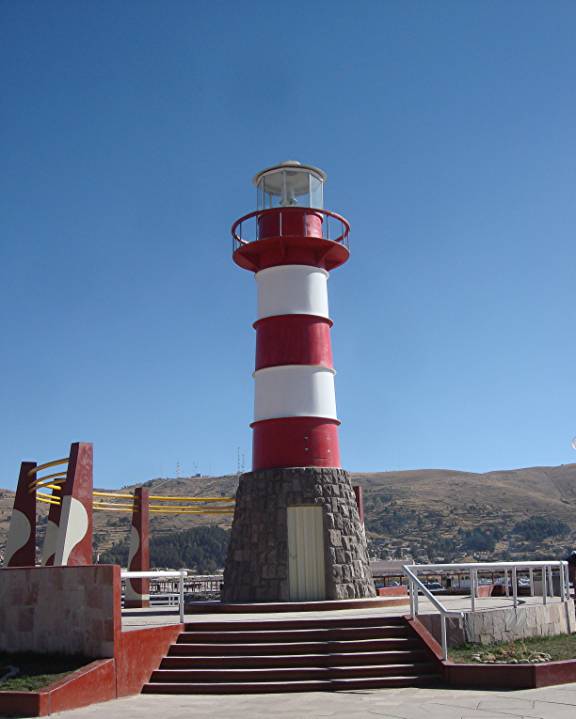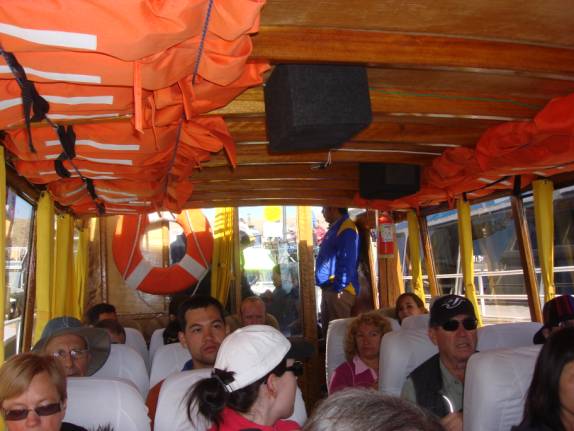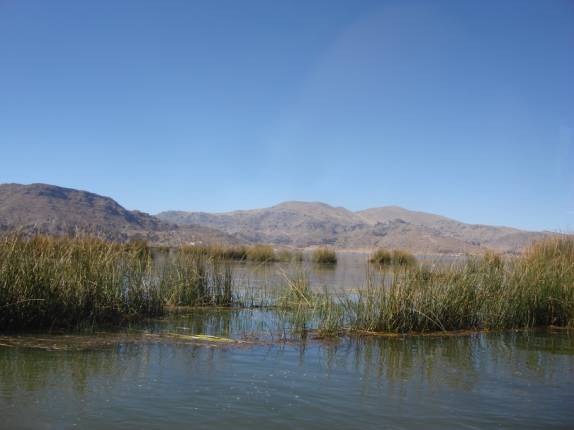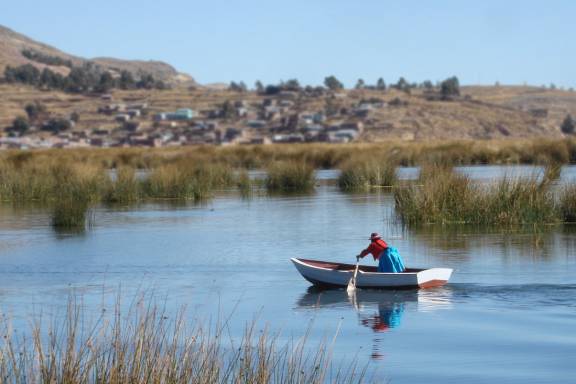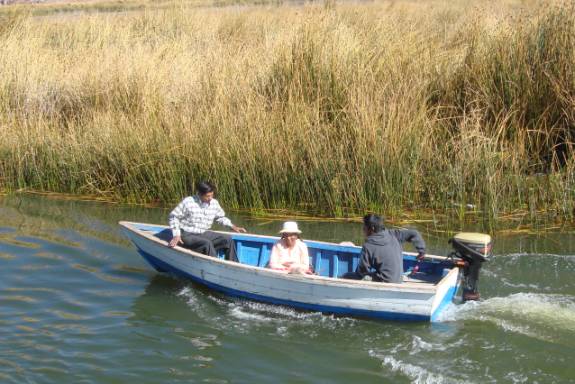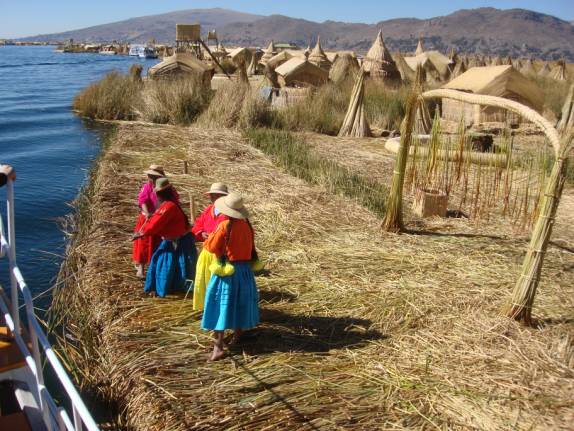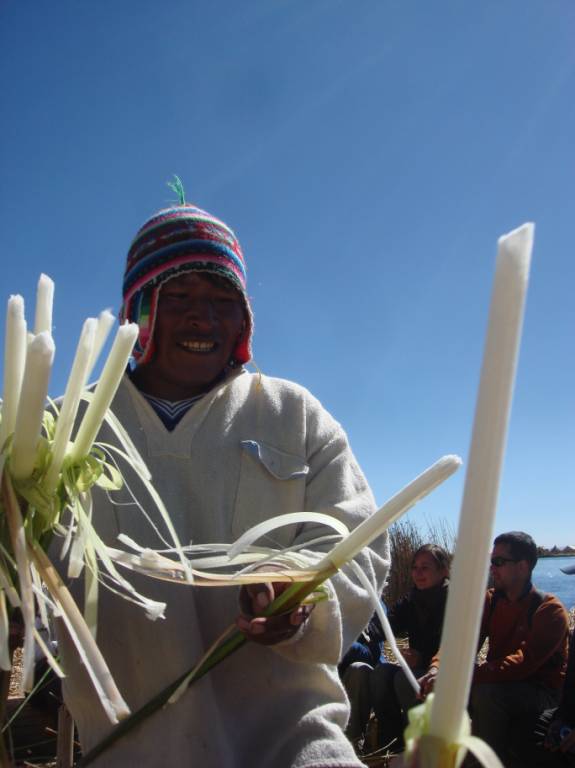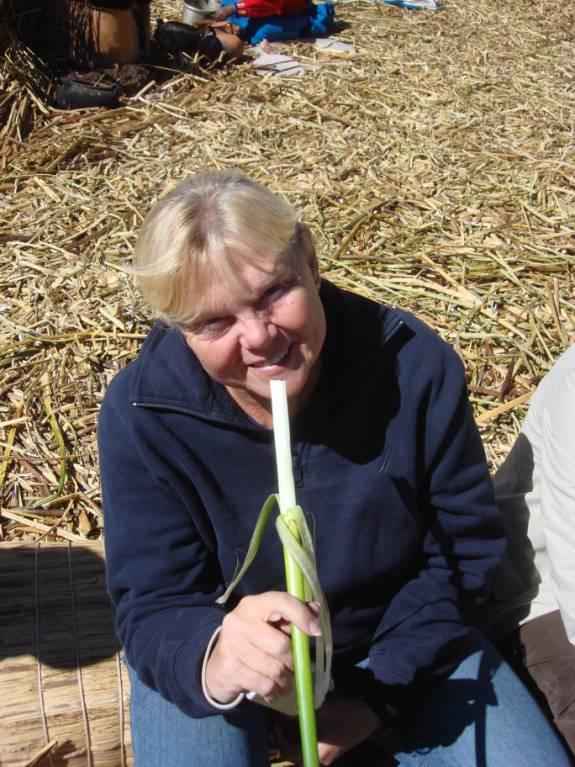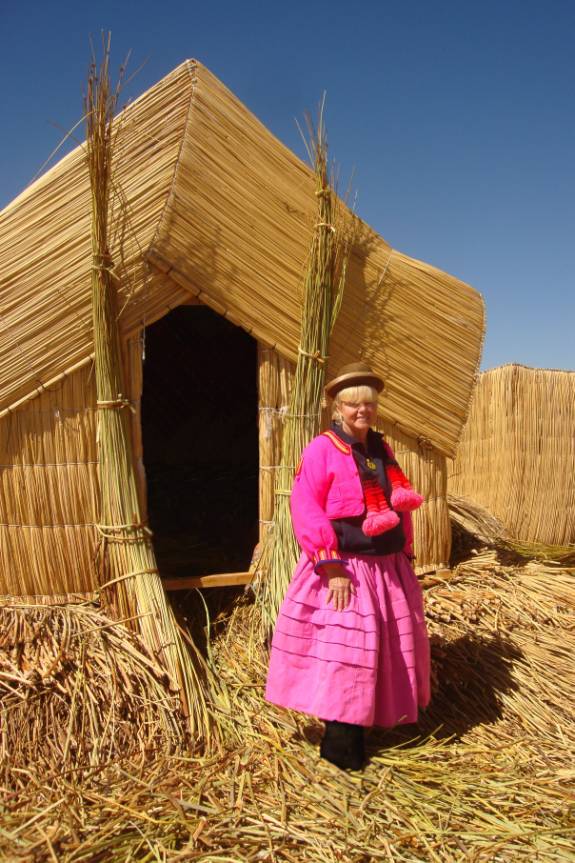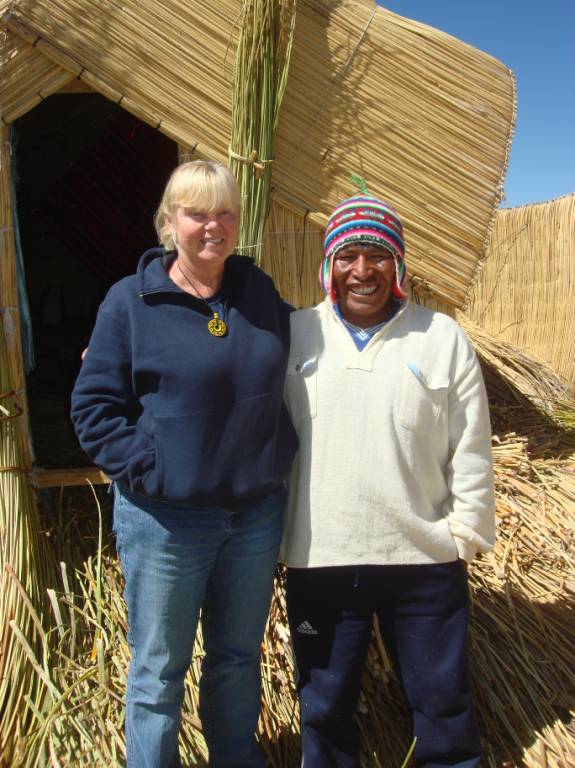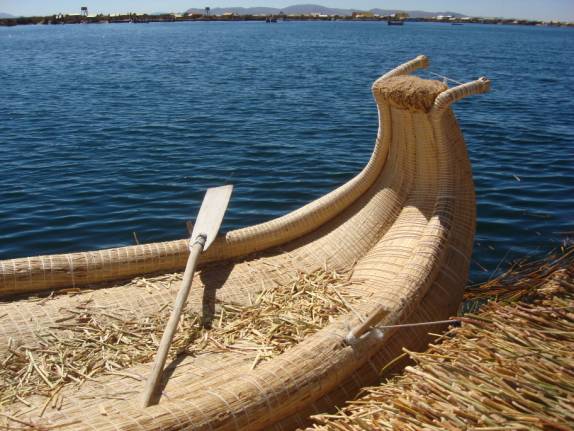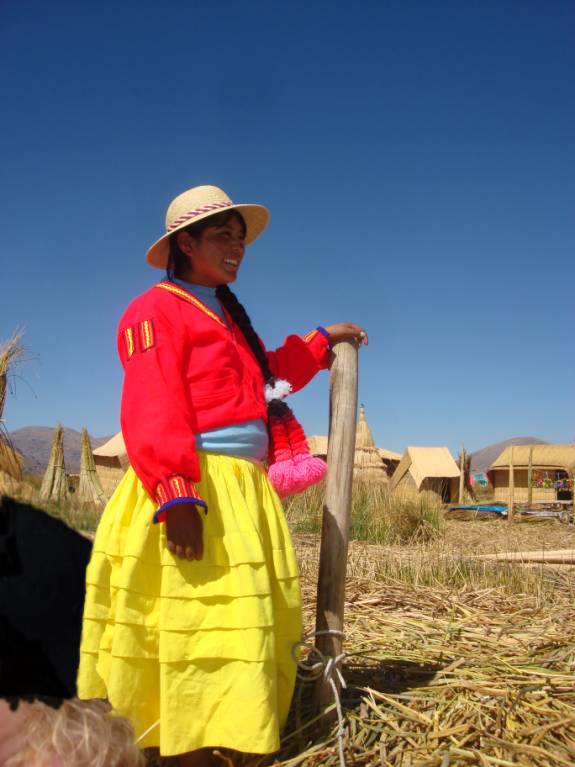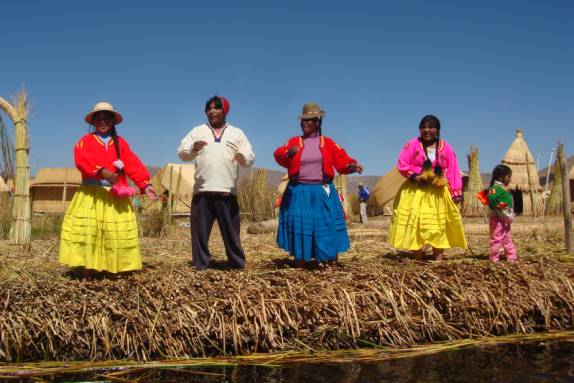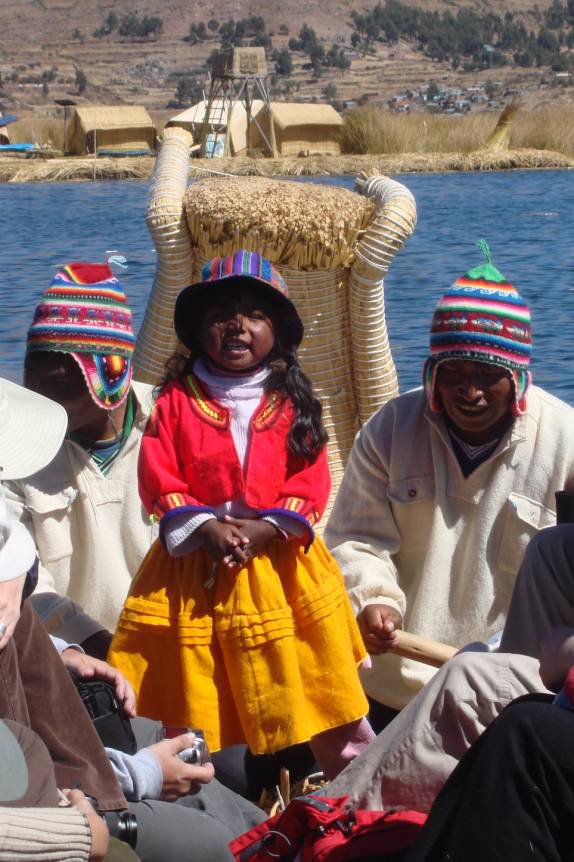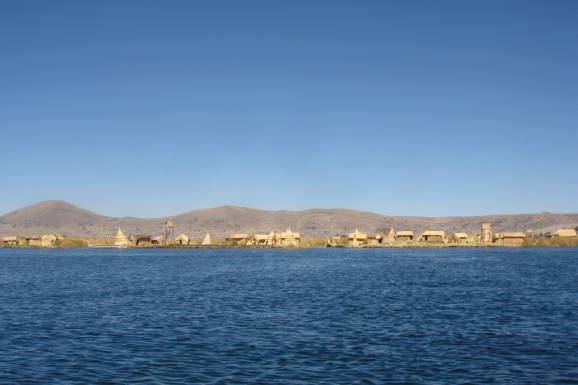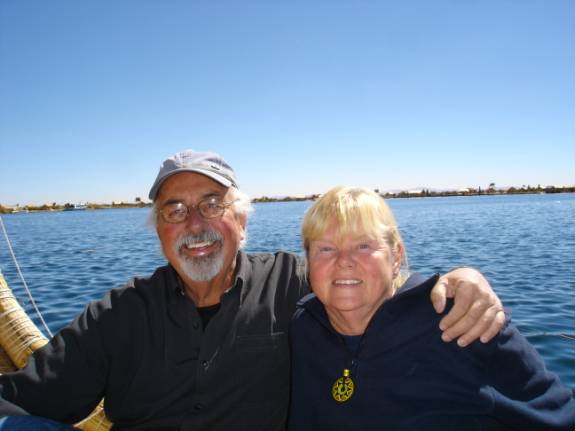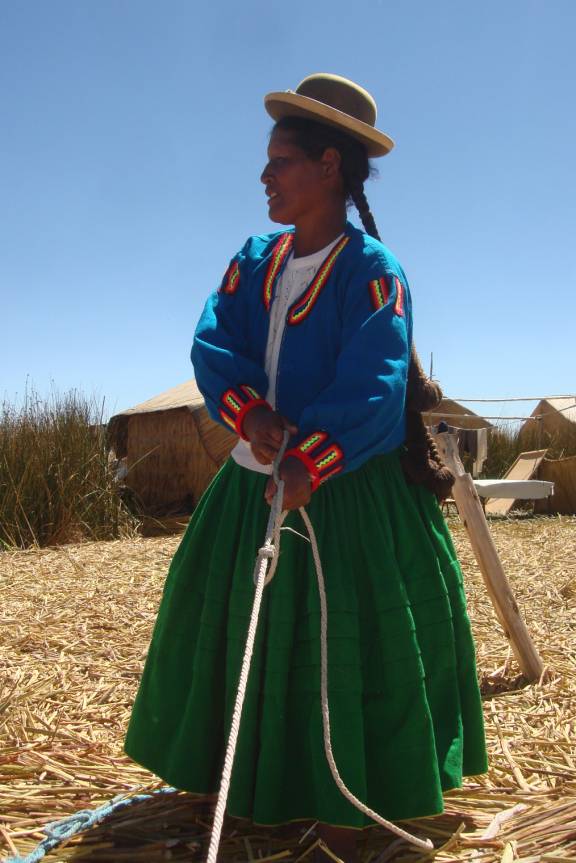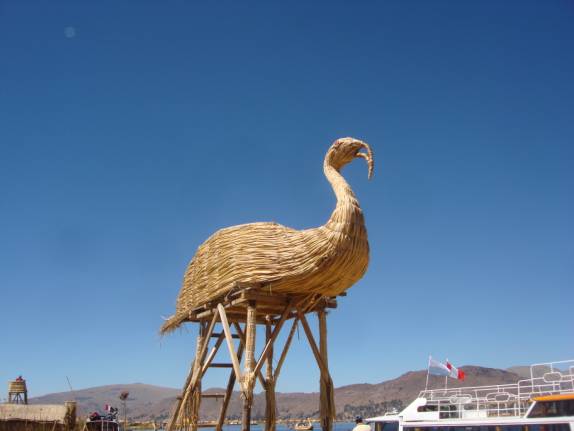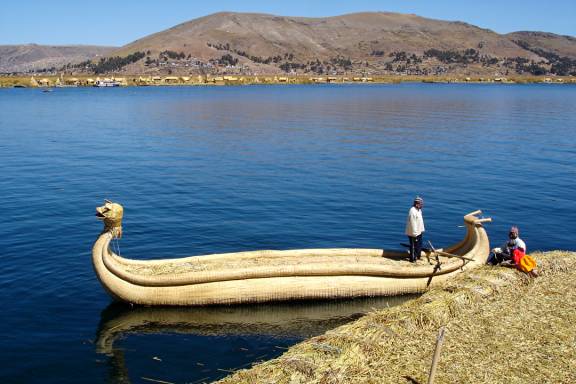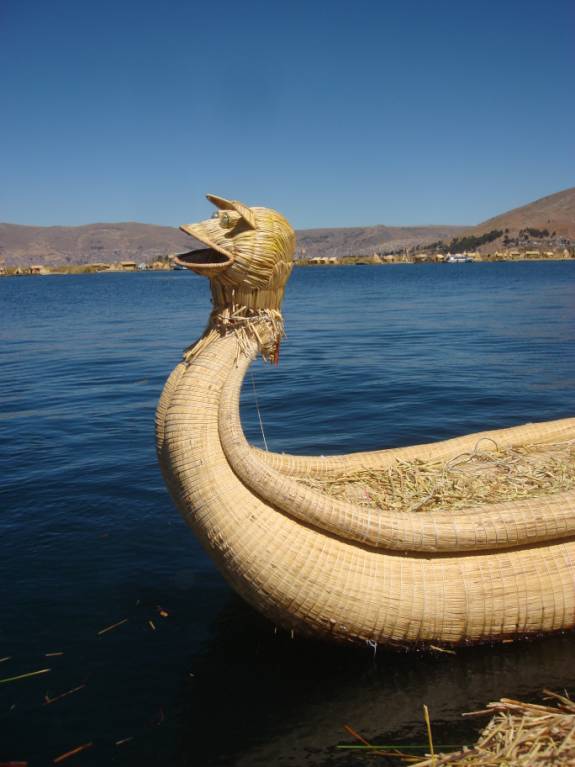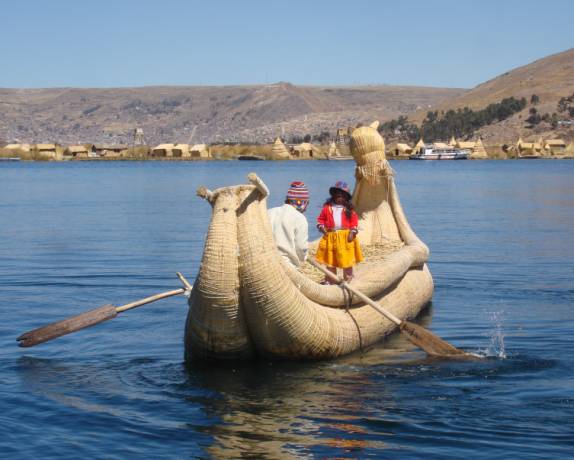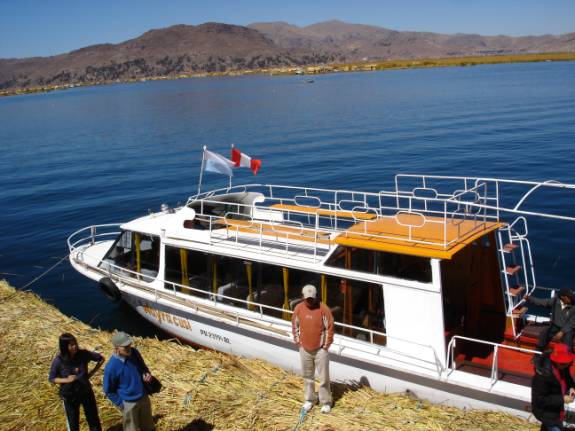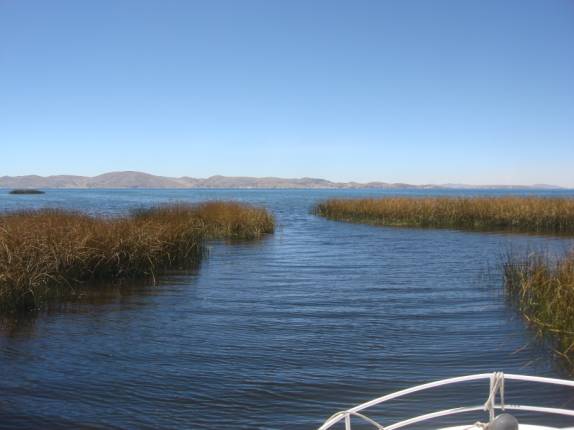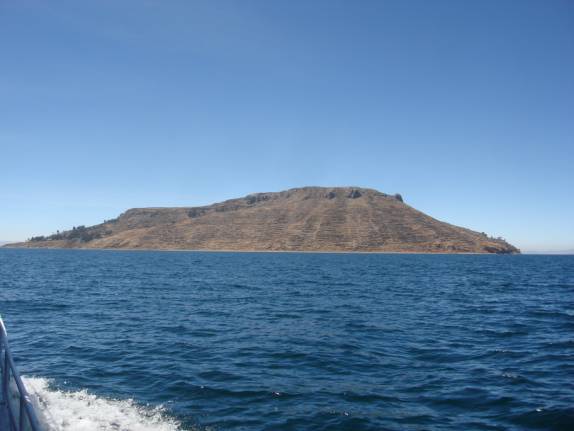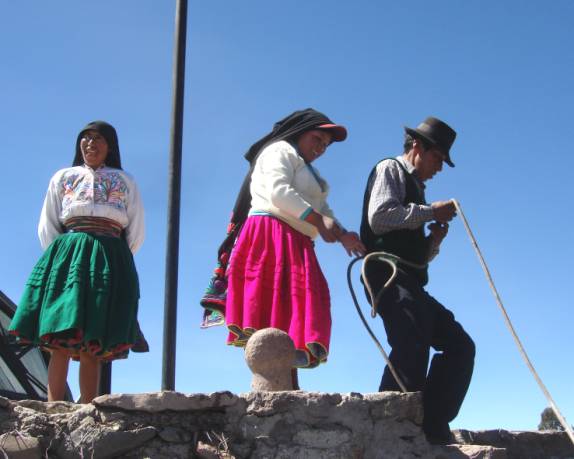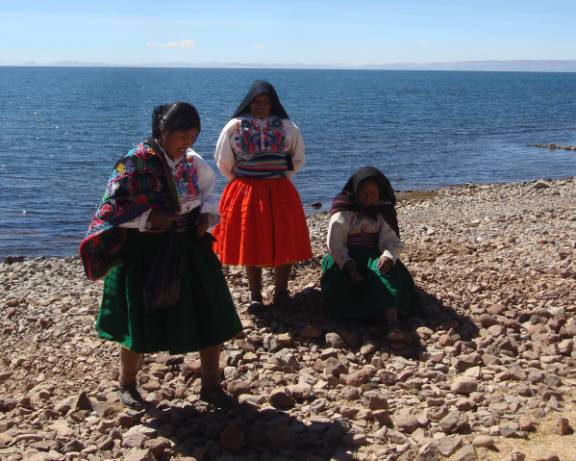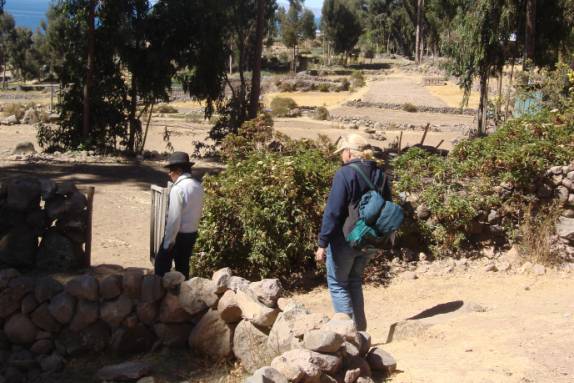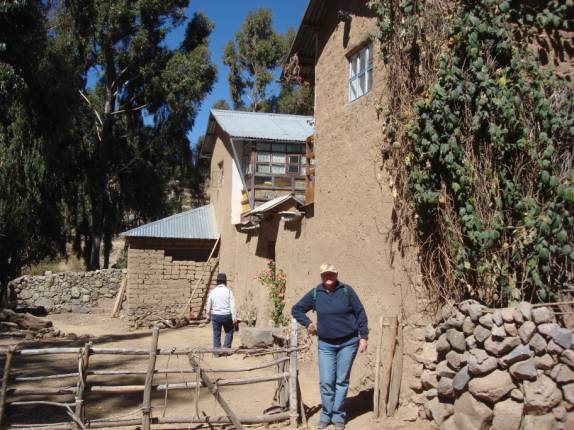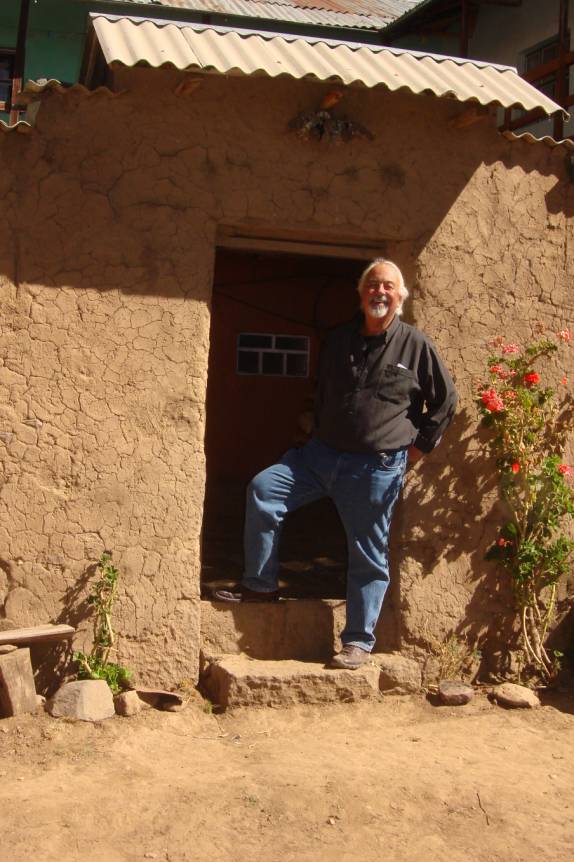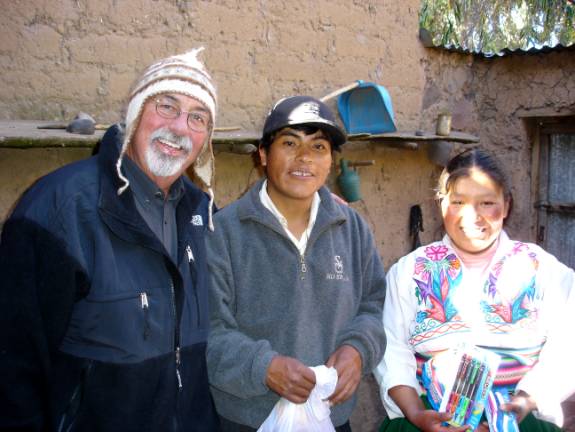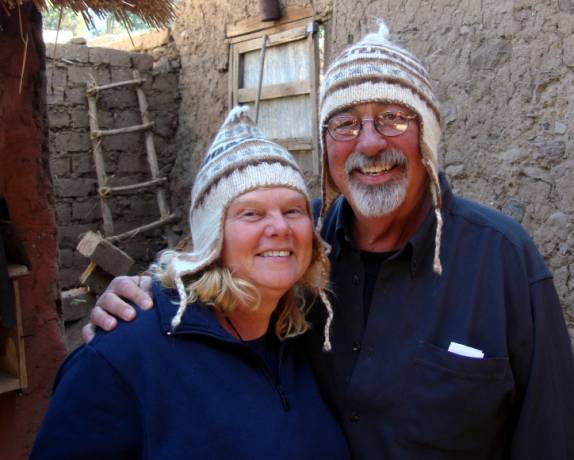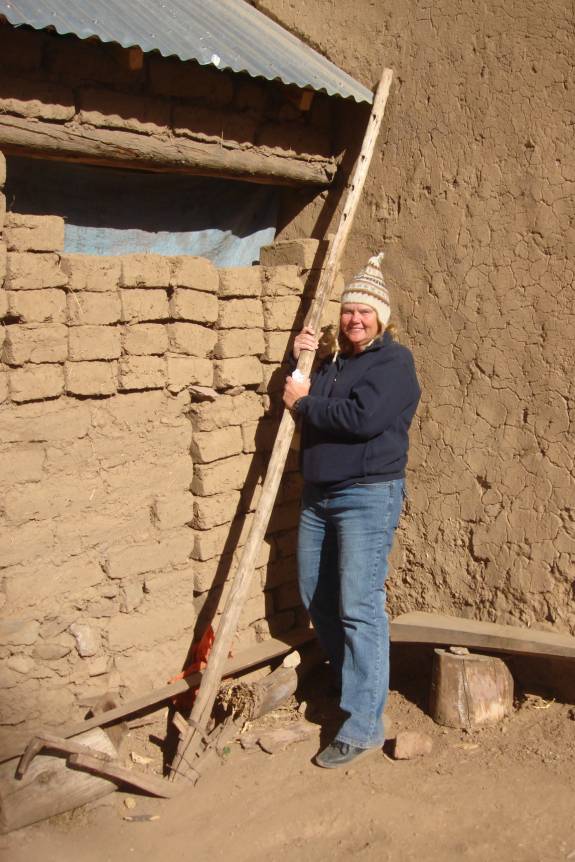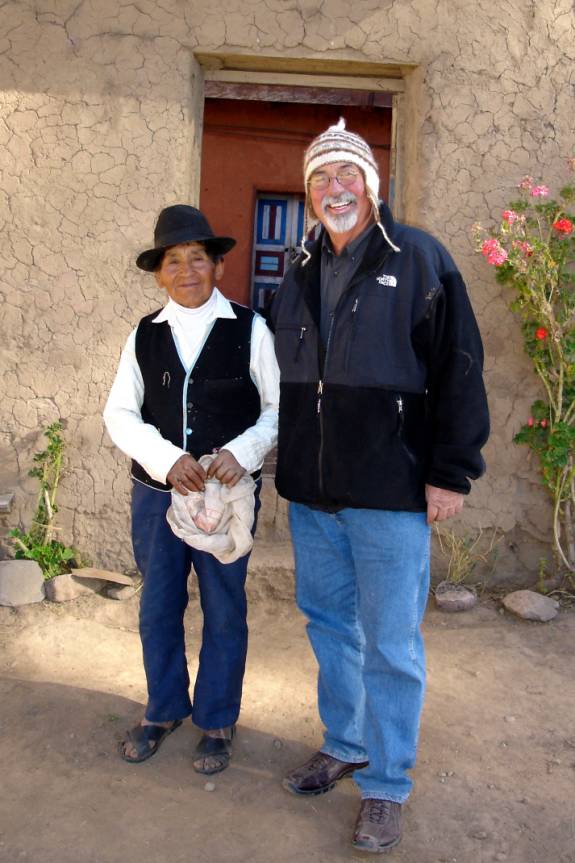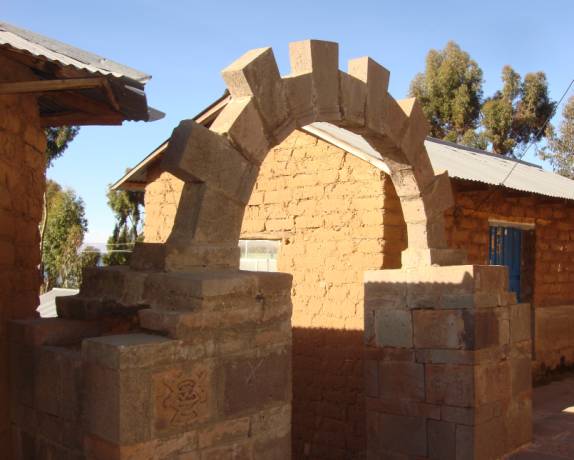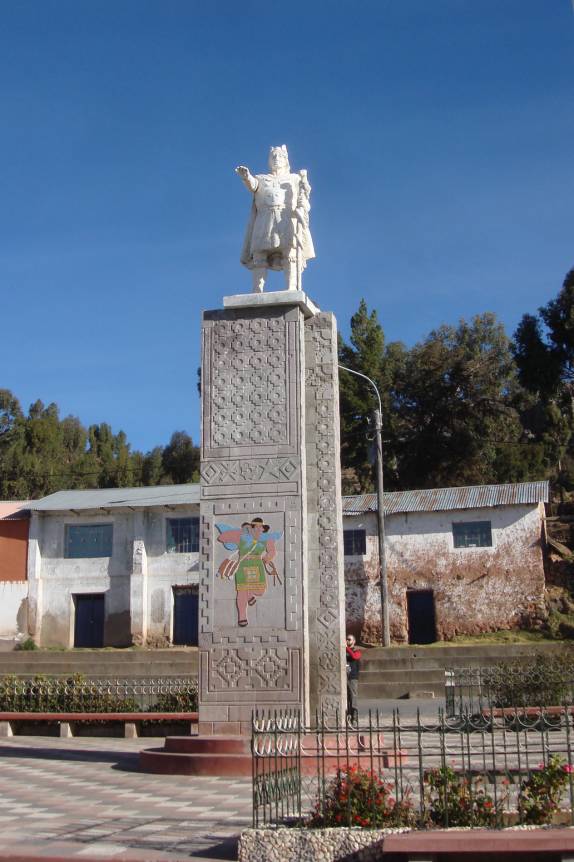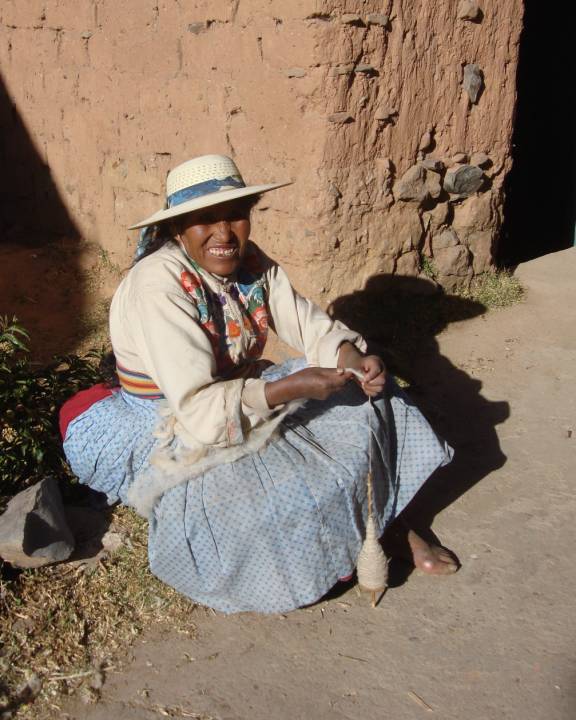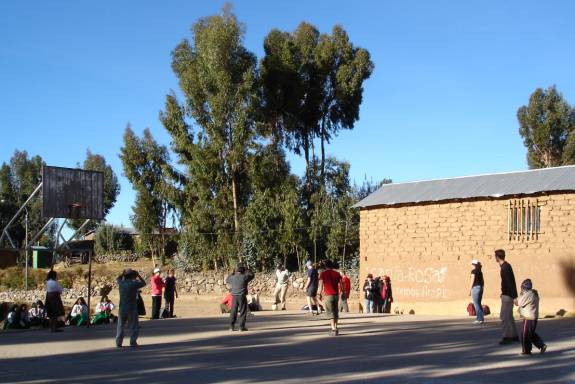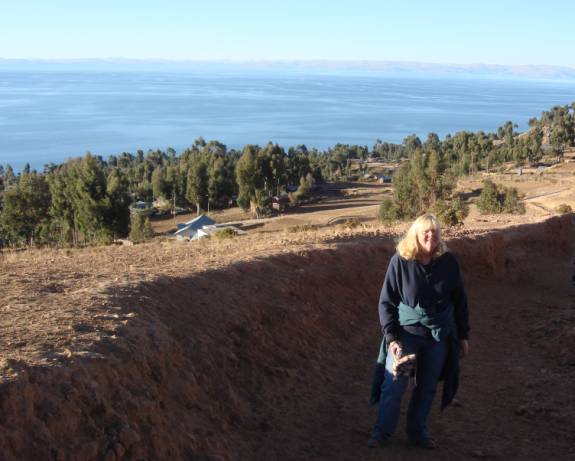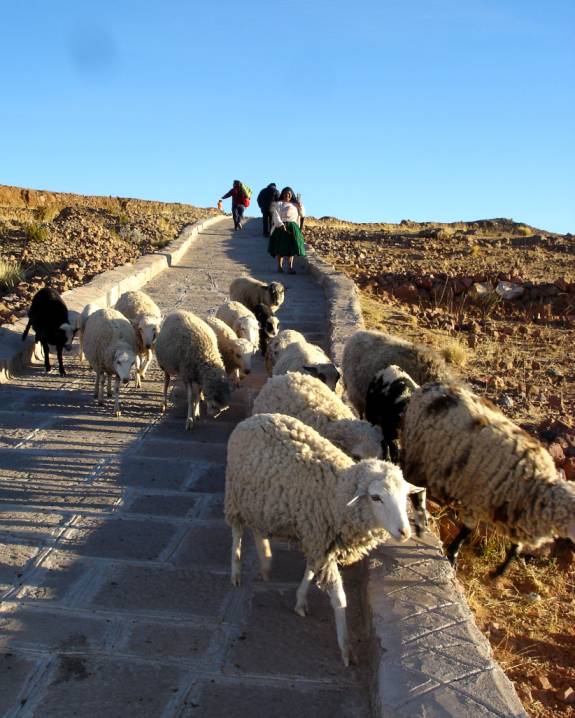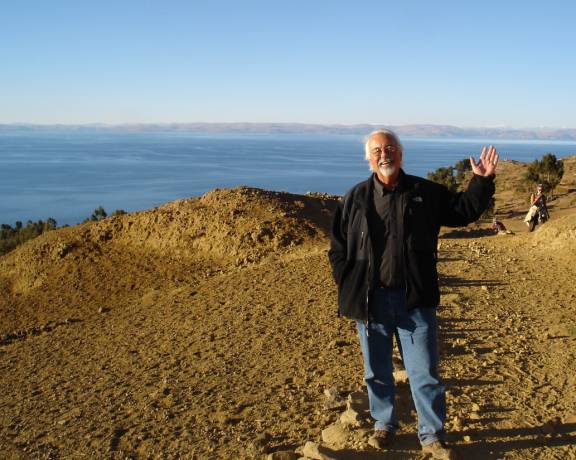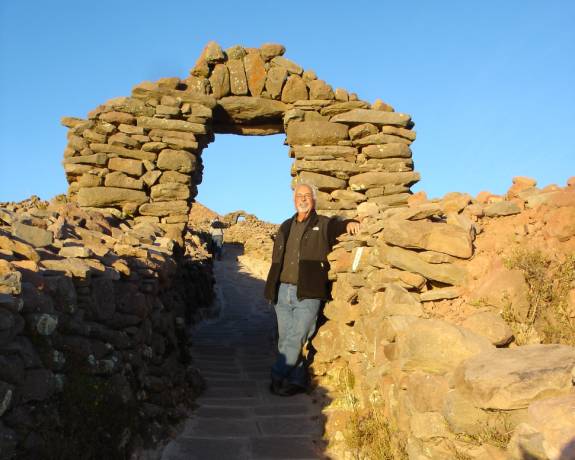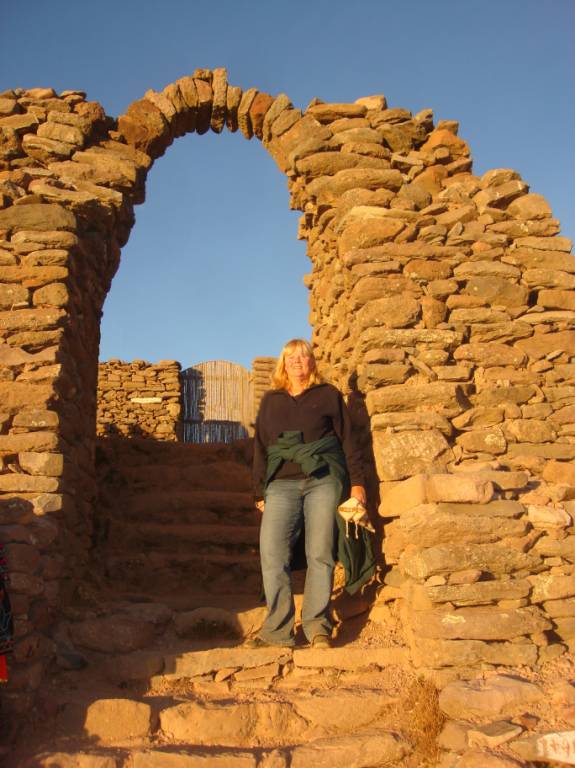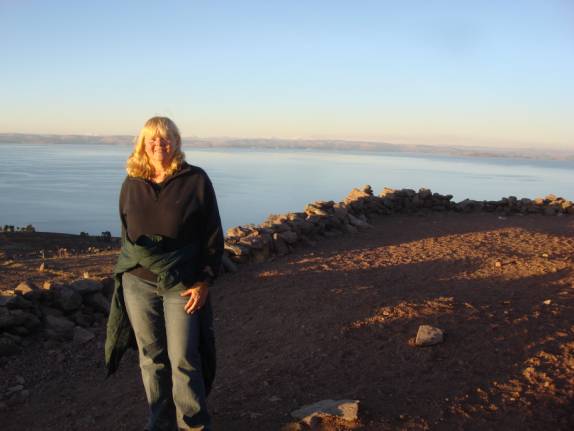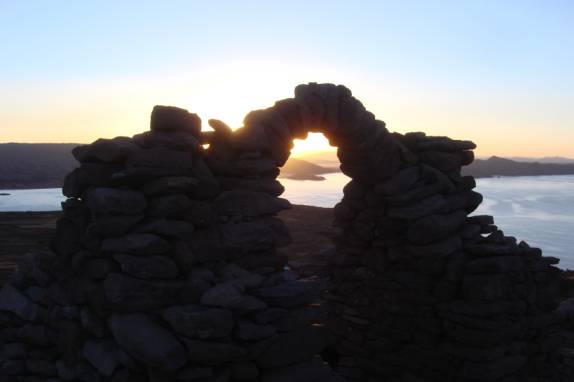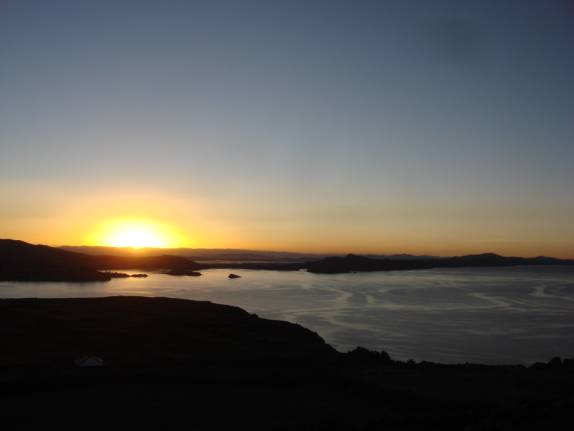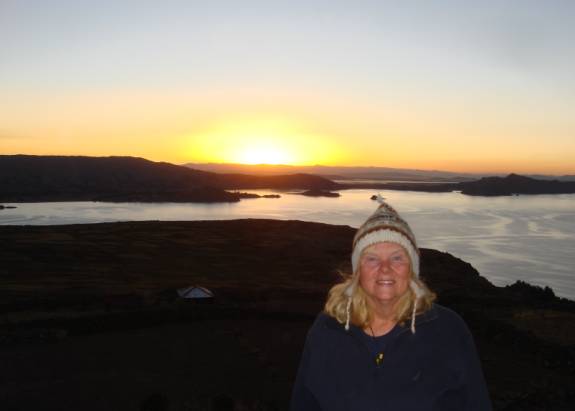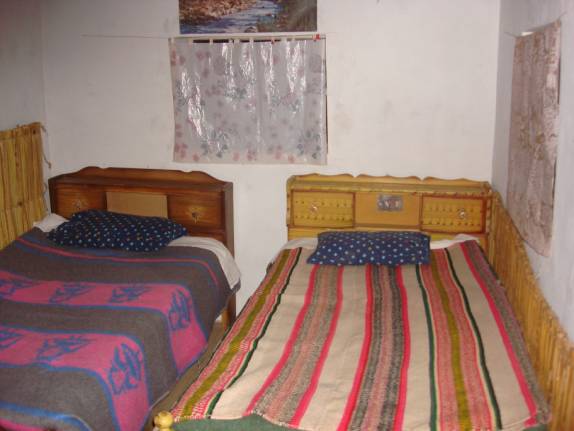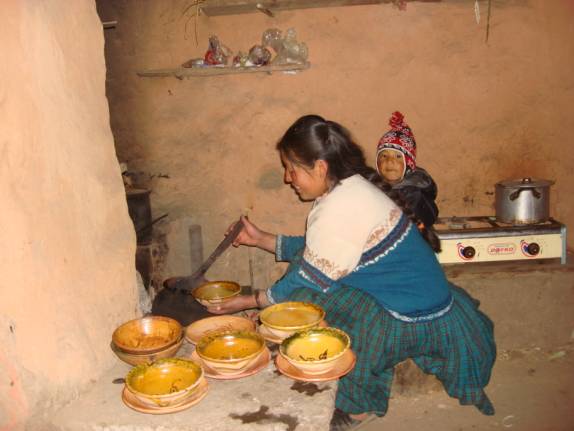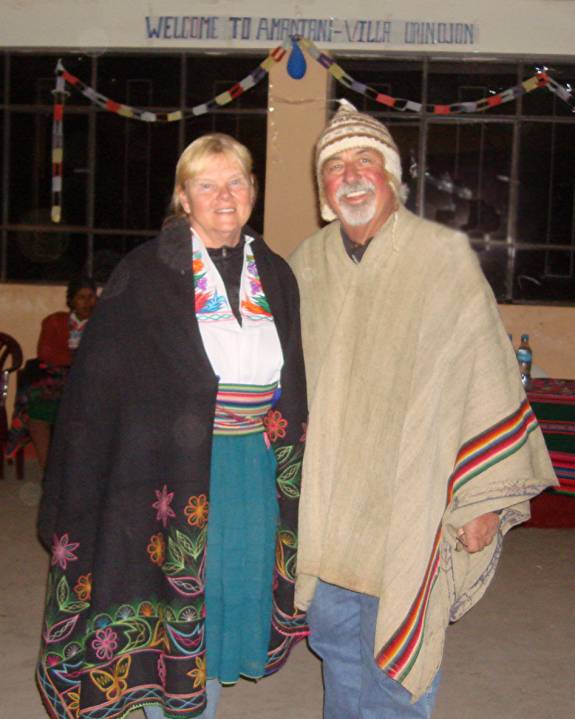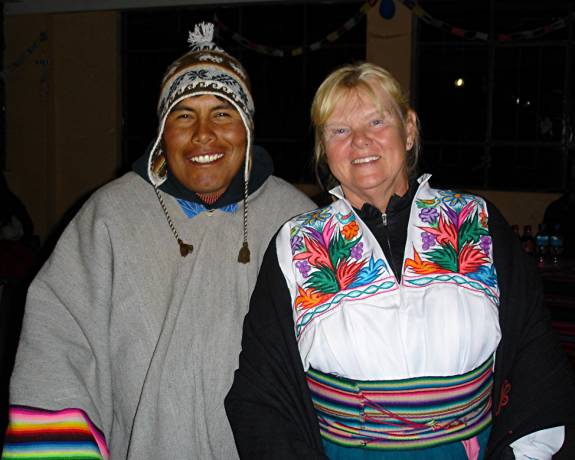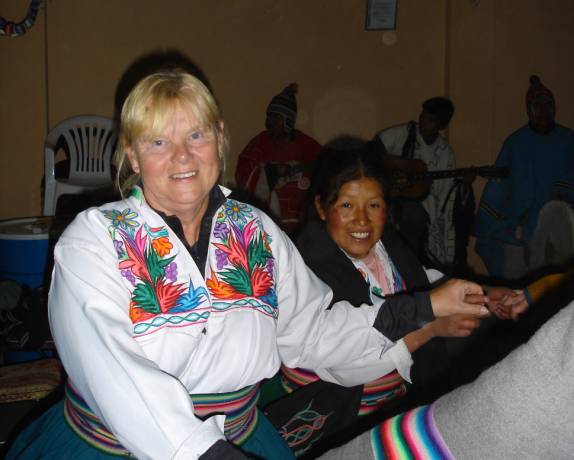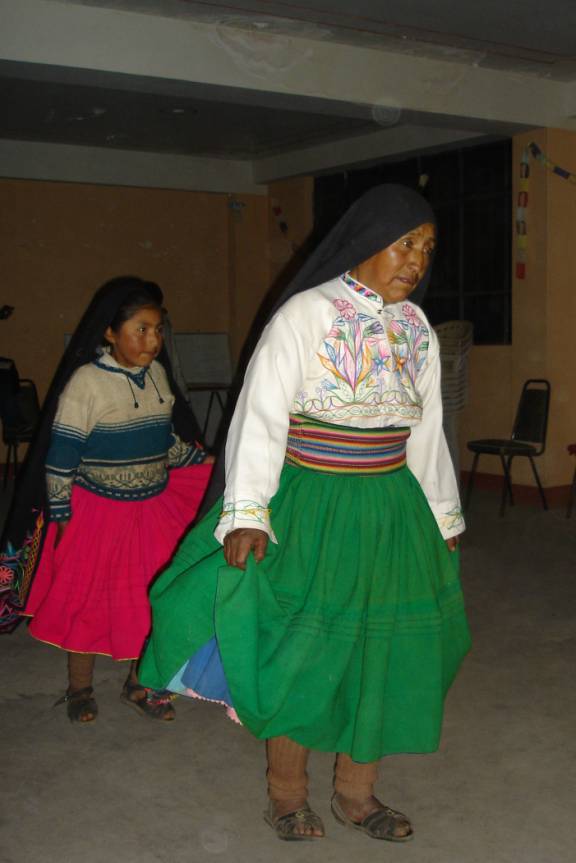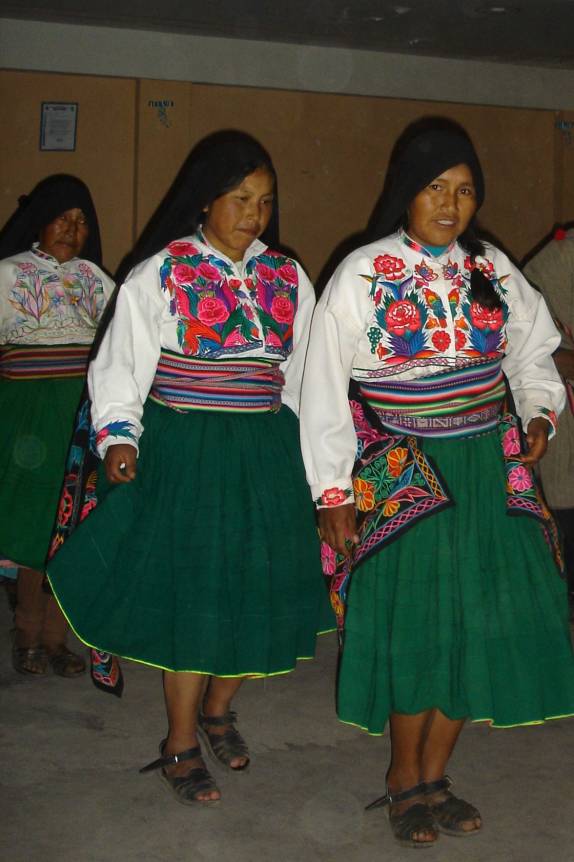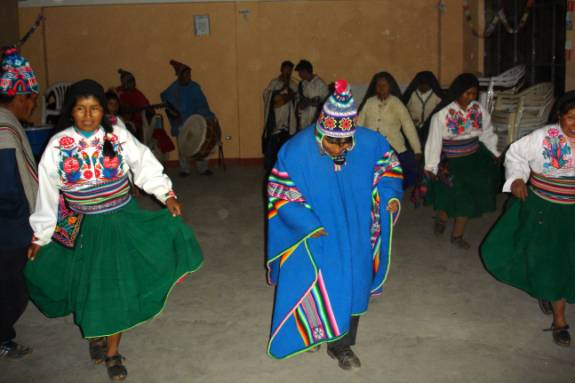|
|
|
|
Site Index:
|
UPDATE#24
08/30/08
Howdy
Everybody, Our
numerous adventures from 2006, 2007, and through 08/29/2008 have been published
on the website. We now continue
with this latest edition. UPDATE
2008 #24 08/30/08 At
last update, we were overnight in the city of Puno following our overland trip
from Cusco. 08/30/08
SATURDAY PUNO
– UROS – AMANTANI – VILLE ORINOJON
It was 5:45am when I switched off the alarm clock.
The showers at the Hotel Buho were wonderful and hot.
All packed up, we phoned the bellman to come for our luggage.
Taking only the bare essentials for our two-day excursion, the hotel
would be securing the rest of our bags until our return.
Included in our hotel price, we enjoyed a nice breakfast.
At 7:40a, Willie from All Ways Travel Tours came to the hotel lobby to
accept our payment for the tour. Ten
minutes later, we were aboard their bus to pickup the rest of the group going on
tour.
When the bus was filled to its 30-passenger capacity, we headed for the
boat docks on Lake Titicaca.
With the same capacity of 30 passengers, we climbed aboard our tour boat
after stepping across the sterns of several other boats.
Notice the tightly packed, bus-type seats in the boat.
Fully enclosed, we had to take our pictures
through the glass windows as we motored out of Puno harbor.
As soon as I could, I headed topside to the roof deck for a better view
of the beautiful lake. Access
outward to the main part of the lake is through canals cut into the tortola
reeds.
The descendants of the ancient Quechua and Aymara cultures still conduct
life much as it was many years ago. “Row,
Row, Row Your Boat, Gently Down The Stream; Merrily, Merrily, Merrily, Merrily,
Life is but a Dream…”
Of course, some of the old ways have been modernized significantly.
The canal ways led us to a more open area of the lake.
These are the famous “Islas
Flotantes”,
or Floating Islands of Uros.
The islands are totally unique and cannot be found anywhere else in the
world.
The mainstay of these islands is extensive tourism.
The friendly people of Uros welcomed us to their floating homes on
Isla Summa Willita.
The women are excellent, experienced docking hands.
Life on these floating islands is much like it has been for centuries.
It is a strange feeling when you first step onto the soft, spongy layers
of tortola reeds.
With demonstrations by this Uros man, our guide explained the unique
construction of the islands. Every
one of them was built by hand and consists of many, many layers of the Tortola
reeds that have been packed on top of each other.
Notice the very thick base of reeds making the floating subsurface.
As more and more of the reeds rot away on the bottom, more stacks of
fresh reed are layered on top. It
is a continuous process will last less than a month at any time.
Everyday life is totally interwoven with the tortola reeds that grow
naturally throughout this area. Their
homes, their boats, their crafts, and, of course, their islands are dependant on
the reeds. The base of the reed is
the edible portion. Interestingly,
the Uros people do not use toothbrushes; instead, they use the tortola reeds to
clean their teeth.
We gave them the taste test and, as you might imagine, the flavor was
pleasant but bland. I don’t think
I’d enjoy them at (or after) every meal; after all, they don’t come with
fluoride or mint flavor like Crest does.
After centuries of intermarriage with the Aymara-speaking people, any
full-blooded Uros have long since passed. The
Aymara language is now the common language of these indigenous inhabitants.
Age-old methods of cooking in earthen pots over an open fire are the
everyday way of life. The pot on
the left is chock full of Ocas being simmered in traditional style.
Many centuries ago, the Uros ancestors began constructing these unusual
islands in an attempt to isolate their existence from the aggressive nature of
the
Collas and the Incas that sought
to enslave them.
“Honey, does this outfit clash with my blue eyes?”
To answer the question directly, I would say, “Absolutely not,
honey, you look lovely tonight!”
You know, I don’t think you will ever find this particular style in the
Martha Stewart Collection at K-Mart.
Was it love at first sight?
Interesting vessels are fabricated by tightly lashing together bundles of
the ubiquitous tortola reeds. Rotting
from the bottom up, the boats don’t last for a very long time.
As we departed, the wonderful people of Isla Summa Willita bade us
farewell with a song.
For a small fee, we had the delightful opportunity to be rowed across to
another floating island.
In a wonderful style of tourist entertainment, this little girl sang to
the travelers. She has learned
familiar songs in English, Spanish, German, and French.
You can bet she did very well when they passed the hat.
Another skilled dockmaster grabbed the lines from the arriving boats.
Made primarily of tortola reeds, this interesting observation deck
resembles a giant bird. Of course
we climbed into it; one person at a time please.
The boats are beautifully designed and expertly crafted.
The large figurehead on our boat was very interesting.
Goodbye, Farewell, Auf Weidersehen, Au Revoir, Arrivederci, Adios, So
Long, and See Ya Later Alligator….
Our tour boat, the Wayracusi, had ferried over to this island to
pick us up. That is our fabulous
guide, Cesar Flores, in the reddish shirt and beige pants.
Traveling further through the reed-lined canals, we entered into the main
body of Lake Titicaca. At 12,507
feet above sea level (3812m), this is the highest, commercially navigable body
of water in the whole world. In
South America, Lake Titicaca is the largest lake by volume and second largest by
area. Ranging approximately 120
miles in length (190 km) and 50 miles in width (80 km), the lake covers
approximately 3200 square miles of both southern Peru and northern Bolivia.
The depths average between 460 feet and 600 feet with the deepest point
in Bolivia at 920 feet. The 56
degree F water temperature at the thermocline level (66’) only drops another 4
degrees F at the greater depths.
Well, it's not far down to paradise
At least, it's not for me
And if the wind is right
You can sail away
And find tranquility
Oh, the canvas can do miracles
Just you wait and see…
…Christopher
Cross
Our destination, the remote island of Amantani loomed on the
horizon.
Local residents of Amantani were on hand to help with the boat
docking. These tour boats are
rather strangely configured. Powered
by automotive diesel engines, they do not have reverse and they do not have
neutral. The captain has to plan
his approach by shutting off the engine at just the right moment and gliding up
to the dock. Sometimes, he has to
use a long pole to fend off and guide the boat in.
Good dockhands are a necessity in these instances.
Host families wait patiently for the arrival of their guests.
The island has eight communities that share the hosting of various
tourist groups. The tour
guide has assigned each of the guests in our group to their respective family.
Following our host, we were led along a lengthy, dirt pathway.
Judy paused for just a moment at the gate to the adobe building that
would be our family homestay for the night.
Rustic indeed, however, these accommodations were far nicer than either
of us had ever expected. This
family would be hosts to Judy and me, along with three other people.
Interestingly, the five us now claim Texas as our residential homes.
The others, Paul, Amy, and John Paul, took the room across the deck walk.
The father, Paul, was born in Chile; the mother, Amy, was born in Hong
Kong; their son, John Paul, was born in the US.
The son, Judy, and I were the only US born people in the whole tour
group. The rest of the group, who
were staying in various other homes, hailed from South America, Europe, Britain,
and Australia.
This was the deck fronting our room.
We definitely had a “room with a view” of both the mountains and the
water.
Who’s that knockin’ at my front door?
In a small dining area that shared a little table with the cooking
facilities, we enjoyed a nice lunch of typical local fare.
There was rice, two small potatoes, some Peruvian ocas, and a
piece of fried cheese.
It is customary for guests to bring some small gift items to the host
family. Some of the visitor groups
simply brought fruits and vegetables. We
had learned from another writer about the gifts custom and decided to bring some
items from Stateside. They seemed
genuinely delighted with the package of 8 colorful mechanical pencils and
another containing 10 colorful razors. His
name is Nestor and her name is Analin.
Analin was very pleased with the packages of 4 toothbrushes that
we brought for them. Of course, we
also brought some fresh fruits, bananas, apples, and some tomatoes since those
items are not grown on the islands.
Because the nights get very cold here, they lent us these fashionable,
alpaca woolen hats that would also help them to identify us later. (As you know,
all “those gringo people” look the same).
If Judy had been born here on this island, she would have known very well
how to use this traditional field plow.
The Papa was a very spry and energetic family patriarch.
We had bit of a tough time keeping up with him as he cheerfully led us
around the island.
At 3:30p, Papa led us to the village center and up to the soccer
field.
The islands are steeped in native history.
Legend has it that the founders of the Inca dynasty, Manco Capac
and Mama Ocllo, the children of the Sun God, Inti, emerged from
this lake.
Although both the Quechua and Aymara languages are spoken here on Amantani,
most of the traditions cling to those of their Aymara ancestors.
It was pre-arranged for the entire group to meet up at the soccer field
for a rousing match of Tourists vs. Locals.
The European lads were fierce competitors, however, with late arriving
support, the locals barely defeated the visitors 2 to 1.
At these high altitudes, the visitors were at a definite disadvantage.
Following the soccer game, we all headed up to the highest point of the
huge hills to get the spectacular view of the surrounding area and the setting
sun.
Part of the walkway had to be shared with the local flock of sheep.
Not knowing the way, a bunch of us inadvertently took the tougher,
rougher way along a gravel path for a portion of the hike.
Fortunately, it all ended up meeting with the improved pathway.
Notice the long, improved pathway that leads up through the terraces to
the hilltop.
Numerous lovely stone archways grace the stairways and pathways on the
climbing hike.
Finally reaching the top, we passed under the archway leading to the
ruined Temple of Pachatata (Father Earth) dating back to the Bolivian
culture of the
Tiahuanaco
that inhabited this area from about 500 BC to 1000 AD.
We were feeling pretty good about succeeding at the long climb.
Meeting him at the top, our friendly guide, Cesar, informed us that we
now needed to walk all the way around the temple three times to honor Pachatata.
The scenery was beautiful with clear views that reached all the way to
the Bolivian mountains.
The sunset was an important time for the ancient cultures because they
worshiped the Sun God as their highest deity.
After sunset, we started the long walk back down to the village.
At the recommendation of another writer, we had brought our flashlights
and had a couple of bright, LED-type headlamps strapped around our foreheads.
They worked quite well, although I preferred to travel most of the way in
the dimmest amounts of natural light. It
is amazing how well we see when our eyes are adjusted for night vision.
To keep warm at night, our beds were piled with three heavy alpaca wool
blankets over sheets. They did an
amazing job of holding the body warmth.
Dinner was being prepared for our arrival.
Coming directly out of pottery crock, Analin was dishing up the
absolute best Quinoa soup. It
was so good that I ate a bowl and a half of the delicious concoction.
There was rice and a vegetable stew to further tempt the palate.
I sure wish I had her recipe for the soup.
Now tell me, is that what they mean by, “the pot calling the kettle
black”?
After dinner, our hostess helped Judy get all decked out in the local
style, traditional clothing. The
various colors, materials, and patterns all help identify the particular
community to which the people belong.
Obviously, we are easily identified with the Amantani island
community of Ville Orinojon.
Dressed to the hilt, we were invited to join in for some music and a
dancing extravaganza at the community social center.
Without electricity, the room was dimly lit with Coleman type lanterns.
Good evening, Lil’ Miss Hot Stuff…
May I have the pleasure of this dance, please?
The local band played on using traditional instruments.
I’d have to give this song a “five”; it had a good beat but
was tough to dance to.
“Well,
it’s one for the money, two for the show, three to get ready, now Go Cat
Go…”
…The smiling faces of our fantastic guide, Cesar, and the lovely
maiden, Judy.
“I
could have danced all night, I could have danced all night, and still have asked
for more…”
The local folks got together on the dance floor and showed us all how
it’s really done.
Somehow, they made it look so much more elegant than the visitors.
With baby strapped on her back, it was time for our hosts, Nestor
and Analin, to lead us home. With
no streetlights or electricity, you should have seen the billions and billions
of stars filling the heavens. We
actually got to see the stars forming the famous “Southern Cross”.
Back at the family home, we made a visit to the outhouse before heading
to bed. Judy was glad to get out of
the traditional outfit as she found their clothing to be quite uncomfortable.
I must admit that the poncho or
sarape was very warm.
All in all, I still prefer my warm jacket.
I suppose if I had to be stuck outside in the cold tending the sheep, the
serape would provide more overall warmth in the seated or crouched position.
With no electricity on the island, a single candle was our source of
light for the room. With no power
or heat, I would guess that might qualify this house as a real, energy efficient
home. TO
BE CONTINUED…SOON… Lotsa
Luv, Fred
Reed and Judy Law AMARSE MT40 "AMARSE". is pronounced "AM-ARE-SAY".
Our website is: www.amarse.net .
|
|
Fred H. Reed |
www.amarse.net © 2006 2007 2008 2009 2010 2011 |

